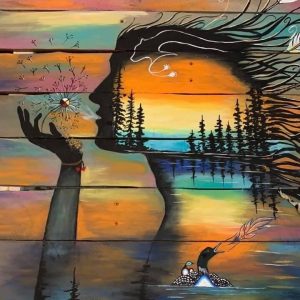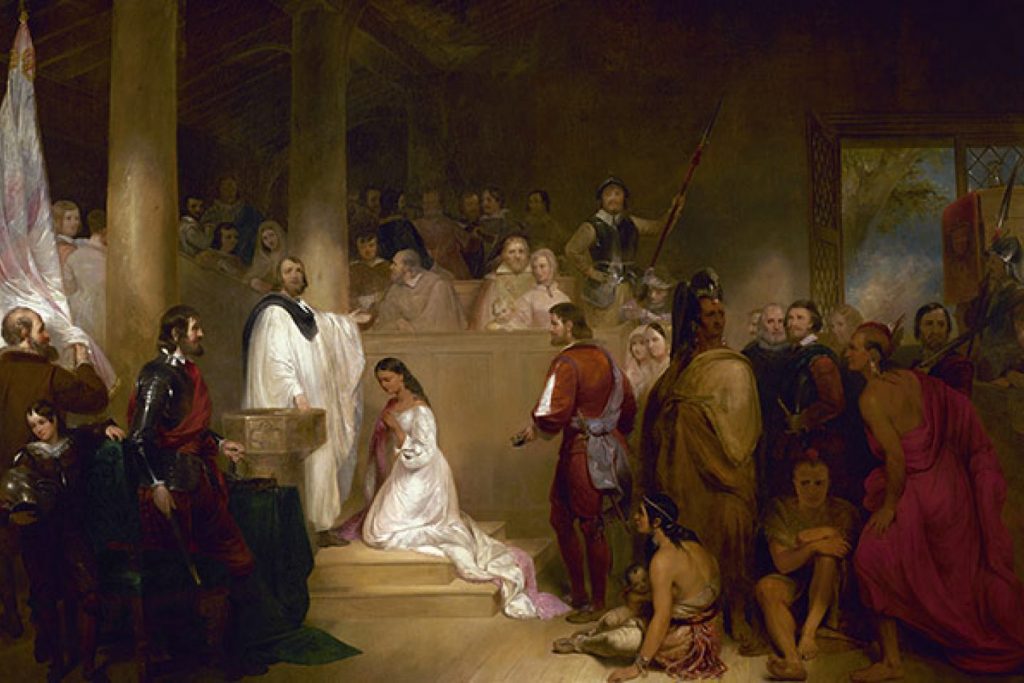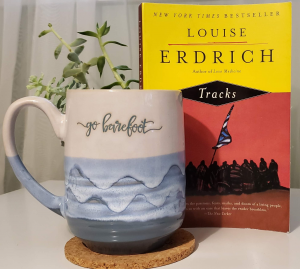
Artwork by Jessica Somers. The interconnectivity of this piece I felt complimented what I was trying to do with my story. I was inspired to write this story from reading and listening to Thomas King tell “The Truth About Stories.”
In not quite the beginning of creation, nor not quite the end, a Being existed. Our Being. Like all other Beings, ours’ was formless; only conscious thought marked it as existing. And much like the other Beings, ours’ was determined to find where it fit into the rest of existence.
Our Being wandered. It wandered over grassy plains filled with field mice. It wandered through meadows full of dancing flowers. Until finally, at the edge of the meadow, it came to a river.
The river gurgled and sang as it flowed over rocks, happy as can be. But there was something missing, as beyond the flow of nature, our Being could not see any other life. Across the river our Being noticed another. It too was watching the river.
This other Being, much to ours’ surprise, seemed to be being drawn into the river; it crept closer and closer until all of a sudden, the Being exploded!
This was not a violent explosion as one might think. Rather it was more of a burst of energy; of excitement; of wonder. For the Being across from ours had burst into hundreds of fish to populate the river.
“Wait!” Cried out our Being to the one that was now Fish, “Wait! Please tell me how you knew you wanted to be fish!”
Just as our Being thought it would not get an answer, Fish swam up to it and eyed it from the riverbed. To flow is to be happy, Fish replied, telling our Being its story. In its uncreation this Being had enjoyed moving with the flow and thought such an existence would suit it just fine.
While flowing along sounded like a nice existence, our Being didn’t think it could enjoy it for all that long. Having had its answer, our Being thanked Fish and moved on.
Traveling further inland, our Being came across a dense forest with a game path cut through the middle. Wondering what kind of creatures would live in such a place, our Being entered the forest.
It wasn’t long before our Being came across the creature known as Bear. “Oh, Bear.” Wailed our Being, “Tell me what made you choose to live in the forest.”
To lumber is to be happy, Bear replied, telling our Being its story. In its uncreation this Being had enjoyed taking in the scenery at a slow pace, and thought to be a big burly creature, with all the time in the world, would suit it just fine.
Our Being didn’t think lumbering around slowly sounded like that much fun, so it thanked Bear for its answer and moved on.
Continuing down the path, our Being began to notice the tree were thinning out. They become so sparse that our Being could see just up ahead there was a clearing. In the middle of this clearing, there was a strange structure; it was like nothing our Being had ever seen in nature before. Curious beyond belief, our Being made its way up to the structure.
“Hello?” Cried out our Being, “What place is this?”
When no answer was returned, our Being entered through a largish opening. Within the structure was a room full of furniture made from branches woven together. The most notable of all was a large table in the middle of the room. Drawing closer, our Being noticed on top of this large table a smallish box sat.
Our Being crept closer, wondering what might be inside this box, unaware that the box was whispering to it, beckoning it closer, begging our Being to just crack the lid, if only for a moment.
“Stop!” a voice rang out from the opening of the structure, but our Being was much too drawn to the box and lifted the lid; just a crack.
But a crack was all it took.
From within, Beings, much darker than ours, escaped from the box. Our Being was shocked at the evil within these other Beings’ stories. They circulated the space within the structure, wailing and whining all the while. They promised to bring to the world violence, starvation and disease before finally escaping through the opening of the structure, and out into the world.
Our Being collapsed to the floor and began to cry. “Oh why! Why could I not leave the box alone?” It wept out of fear for what it had released unto the world.
“Please don’t cry,” spoke the voice from before. Our Being looked to see another, much like itself, nearby. “For though once you have told a story you can never take it back, I will work to tell more stories to outweigh those that bring you despair.” And with that the Being turned into a woman.
Our Being stared in wonder, and suddenly felt that all would be right in the world, if only it chose to stay with this Being. And so, our Being turned into a man. “We must be careful of the stories [we] tell, AND the stories [we] listen to, but I think spending eternity telling them with you would make for a nice existence.”
FIN
After I had written this story, I read it to my parents.
I first read it to my dad whose only comment was to say the ending was cute. He seemed to like it but through our conversation he didn’t seem to understand the point of the story. I don’t think he’s been read a story in a long time though.
Later, I read it to my mom. She too hasn’t had a story read to her in a long time and she commented that it was a different experience to have a story be told than to read it oneself. She understood that the story was supposed to contain a moral, but with me reading it to her, she was confused as to where exactly the moral was (I had prefaced the story by telling her it was the creation of evil). She became more stuck on what I considered little aspects (i.e. our Being turning into a man at the end — its just a fable, or a creation story in my mind; my thinking was that we as humans are storytellers, so what better way to combat evil but by telling stories that weren’t evil. In order to do so, one would need a voice, so my story ended with the creation of humans).
After this experience I would not consider myself a good storyteller based on the reactions of my parents. My mom commented that there was emotion in the story because of the way that I told it; I’m still unsure if the emotion I wanted to convey is the same one she felt.
This “Creation of Evil” story was originally told by Leslie Silko in “Ceremony” and later retold by Thomas King in “The Truth About Stories.“
Works Cited
King, Thomas. The Truth About Stories. House of Anansi Press, 2010.
Silko, Lesli. Ceremony. Penguin Publishing Group, 2006.
Somers, Jessica. Symbolism. Indigenous Art Collective of Canada, 14 Oct 2020, https://passthefeather.org/jessica-somers/. Accessed 3 Feb 2020.

